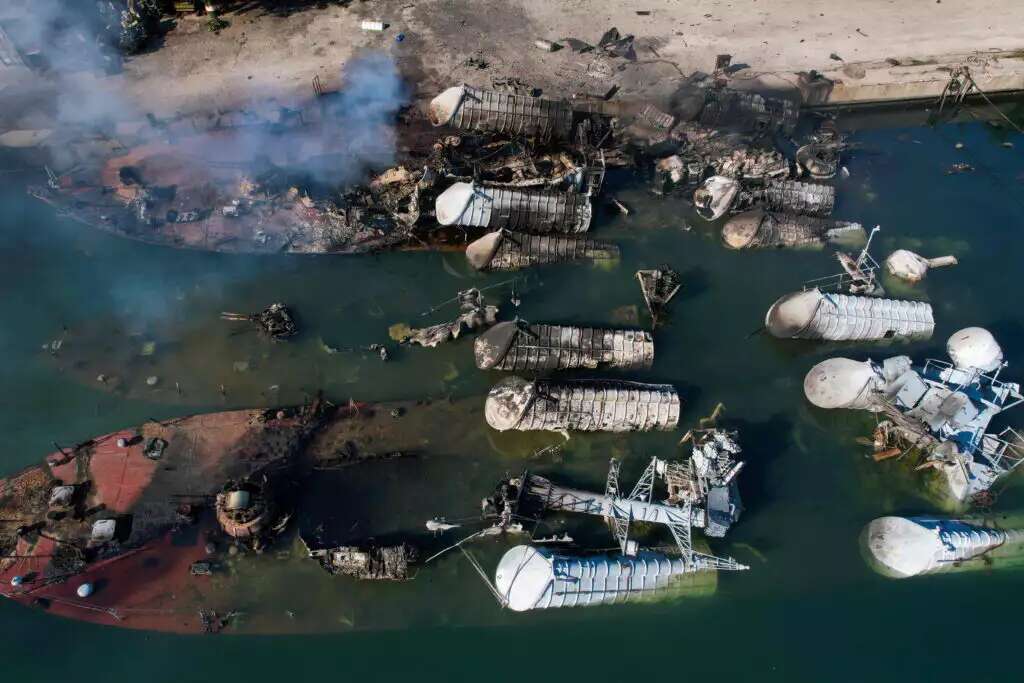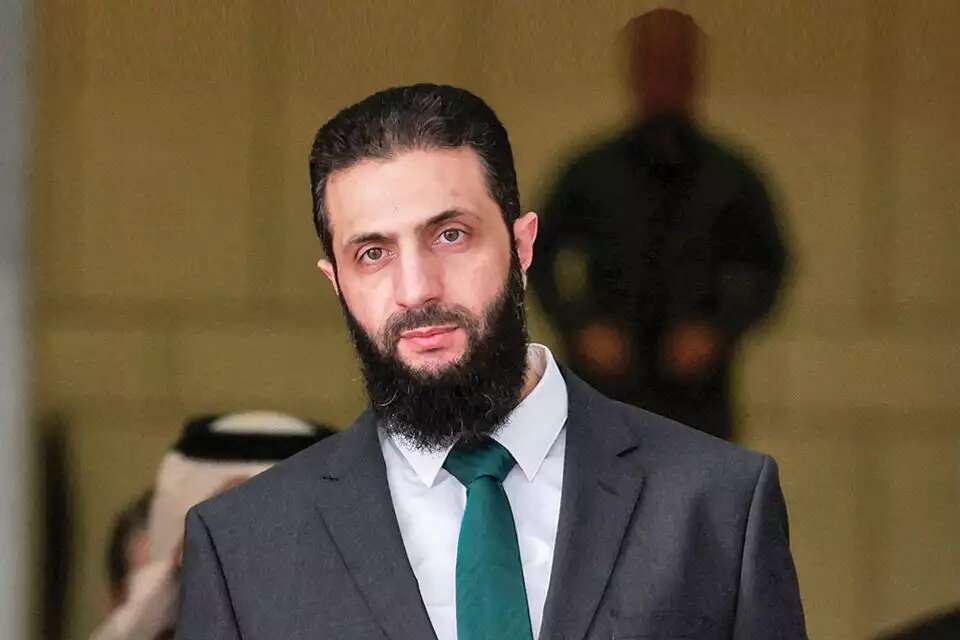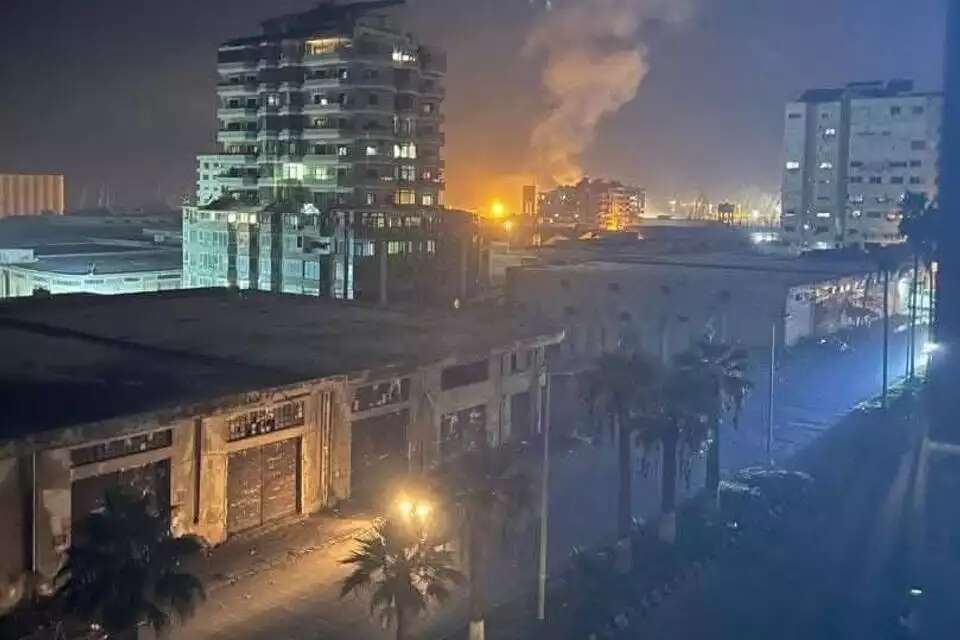In Israeli Navy textbooks, the "Battle of Latakia" during the early hours of the Yom Kippur War is a staple of military heritage. Israeli missile boats sailed to the northern Syrian port and sank five Syrian warships, returning unscathed. It was the first historical engagement in which both sides used surface-to-surface missiles.
"It was a historic battle," emphasized Col. (res.) Udi Erel, then a young captain and operations officer of Flotilla 3, which carried out the mission. "Two hours of fierce exchanges that established a wartime fact: any Syrian or Egyptian vessel that entered the sea never returned to port. The Navy relied heavily on past traditions. Once, in such victories, it was customary to place a broom atop the mast to symbolize that the sea had been 'swept clean.' But the flotilla commander, Micha Ram, refused out of respect for the enemy and to signal that the mission was not yet complete."
Video: The Israeli Air Force strike on the Syrian Navy, December last year // IDF Spokesperson
Amid the chaos of the Swords of Iron War, the heroic operation "Arrow of Bashan," launched on December 8, 2024, after the fall of the Syrian regime, nearly faded from public memory. Fearing that strategic Syrian weapons left behind would fall into hostile hands, a joint operation was launched involving ground, naval, and air forces, ultimately neutralizing 80 percent of the capabilities left by Assad's military.
As part of the operation, Flotilla 3 returned to Latakia, the site of its Yom Kippur War legacy, and sank 15 vessels carrying weaponry that could have posed a serious threat to Israeli national security.

"In the end, we're walking in the paths of our predecessors," said Maj. T., commander of INS Yaffo, which took part in the operation. "Every naval officer grows up on those stories and the routes we sailed. When I addressed the crew before the mission, I felt chills, I knew we were about to undertake a mission of deep significance. I spoke to the sailors about the Battle of Latakia, because without historical awareness, we are nothing. Just as the 7th Armored Brigade draws strength from the Battle of the Valley of Tears, we too must know our past. In the end, it's the spirit that wins battles."
Maj. T. welcomed us aboard the INS Yaffo. Just 28 years old, he had been on leave when the war broke out but rushed back, initially serving as a deputy before formally taking command eight months ago.
With him were two strike officers from neighboring vessels in the flotilla who had participated in the operation: Lt. T. from INS Herev, who had still been in naval officers' training when the war erupted and found himself at sea by October 8; and Lt. G., who had joined INS Kidon only a week before the war began.
"I didn't even know the names of the sailors," said Lt. G., 24, laughing. "Everything happened in motion. In officers' training they told us we'd be the generation facing a war, but they say that to everyone. For us, it became reality. It wasn't a shock, but it was pressure, especially when you don't know anyone, you've got no one to lean on, and you're suddenly in endless shifts at sea. You go out for weeks at a time, come back for supplies, and head out again. On a ship like the Nirit, the intimacy is intense. It's crowded, soldiers and officers live together, creating a unique closeness. And in wartime, it's like that closeness on steroids."
What do you mean by that?
"I'm with the soldiers 24/7, they see me at my most upbeat and my most complex moments. During the war, we got news of friends or relatives being killed, more than once. You need to absorb that, be the supportive figure, and still function."
Lt. T., 23, the strike officer aboard INS Herev, understood all too well. "When I first went out to sea, I still didn't know the fate of two classmates who were at the Nova music festival and listed as missing. We returned from the mission after a week, and I immediately called my sister. She told me their bodies had been found. Throughout the war, we kept thinking about how to maintain our combat intensity while staying connected to home."
When Lt. G. described life aboard the Nirit, it called for a look at the vessels that make up the missile boat flotilla based in Haifa. The Nirit is a Saar 4.5-class missile boat, the smallest and oldest of the fleet, with the first of its type launched in the early 1980s. Measuring 61 meters in length and housing about 60 crew members, it's mainly used for strike missions.

Next to it is the Saar 5-class ship, in service for about 30 years, 85 meters long and considered multi-mission. But the standout vessel is the futuristic Saar 6, just six years into service and resembling a spaceship at 89 meters in length.
"The Saar 6 is the crown jewel," admitted Lt. T., the strike officer aboard INS Herev, one of the older models. "They're the newest and primarily used for defense, but when we head to sea, each ship has its own specific mission."
Strike officers are responsible for the ship's precision weaponry, arms capable of engaging distant targets. During the war, ships often made the long journey from the north to the Gaza Strip to guard gas rigs. It was non-stop.
"Imagine being a combat sailor in the flotilla, exposed to four different combat arenas and having to master them all," said Maj. T. "There's no debating professionalism here. Our ability to reach every front demands mental flexibility from each fighter."
The window of opportunity
Operation "Arrow of Bashan" in Syria caught the sailors completely by surprise. Nothing indicated that an offensive in enemy territory was imminent. except at the highest levels of the military, where concern over the collapse of Bashar Assad's regime emerged in early December.
The greatest fear was the unknown. Israel's security establishment had no idea how Syria's new leadership would view Israel, particularly since the rising figure, Ahmad al-Sharaa - known as al-Julani - had a jihadist past and deep ties to the terrorist organization al-Qaida.

"The operation started as a surprise," confirmed Lt. Col. D., head of Naval Superiority, responsible for coordinating firepower and strike planning. "The operations director at Navy HQ called us all in on Friday for a situational briefing after the coup began. We pulled out contingency plans listing all strategic weapons that could fall into hostile hands. My division handles precise targeting - where to strike, how - and we coordinated with the IDF General Staff and Military Intelligence's Operations Division."
What was the threat posed by the Syrian navy?
"Missile boats that could fall into hostile hands. Each missile on those ships carries dozens of kilograms of explosives and could pose a threat to Israeli civilian or military vessels. The fall of the regime opened a brief window of opportunity, to remove that threat."
On Saturday, Navy HQ continued working on the strike plans. Only on Sunday morning, December 8, did an order go out to Flotilla 3: within hours, they were to head to Latakia port in northern Syria to destroy Syrian vessels deemed a threat to national security.
"INS Kidon was in what we call 'stand-down week,'" said Lt. G. "Every so often, a ship docks for maintenance that can't be done during normal operations. Ours was mid-refit, the kitchen had been removed for replacement. Then Sunday morning, we got the order: 'You're sailing this afternoon.' The mission was simple: 'Sink Syrian ships carrying strategic weapons.' I thought it was insane at first. Set sail in a few hours? I just told myself, 'Okay then.'"
Maj. T., commander of INS Yaffo, also received the order on Sunday morning. "A missile boat has four divisions," he explained. "Detection, navigation and communications, which handles route planning; the weapons division, which handles munitions; the engine and machine crew, responsible for engines and generators that run simultaneously and demand high energy; and the electronics system that protects the ship, detects threats and intercepts. On mornings like this, the captain sits down with division heads, each of whom lays out their plan. It's like preparing for a presentation to top brass. Then we get mission approval and sail out. It's extreme dynamism. We know how to prep under tight deadlines, even in surprise situations. We looked the crews in the eye and said: 'Friends, we're heading north to get the job done.'"
In the weapons division, preparations for the strike began immediately. "Everything moved fast, but we've trained for this since day one," said Lt. T., INS Herev's strike officer. "We studied the operational protocols, the intelligence, and each crew got its target and had to present a plan. No one tells you how to do it, that's your job."
Lt. G. was aboard INS Kidon reviewing the target sheet. "I knew what each target was and where it was docked," she said. "I sat with the mission commander and my controller, and we planned the best execution method."
The port of Latakia, home to Syria's naval base, lies in the north of the country and is considered its primary seaport. It regularly handles shipments of construction materials, minerals, and vehicles, and maintains regular maritime lines to Alexandria, Beirut, and Izmir in Turkey.
Operation "Arrow of Bashan" concentrated primarily on the military port in Latakia and the nearby Mina al-Bayda port. Fifteen vessels were targeted, some of them Osa 2-class missile boats, others Tir 2-class Iranian-manufactured ships modeled on a North Korean missile boat design. The primary concern was that among the weapons onboard were Noor missiles with a range of 200 kilometers and Styx missiles with a 90-kilometer range, which could end up in the wrong hands.

In an operation like this, where time is critical and the window of opportunity is narrow, there's no room to consider moonlight or sea conditions. This was early December, mid-winter, with high seas. Before leaving the Haifa naval base, all vessels underwent "lashing," securing loose objects to prevent damage or loss during the stormy voyage.
In the afternoon hours, Flotilla 3 departed the port, heading north in a secure and quiet formation. On the way, they could see the lights of Lebanon, and even Cyprus didn't seem far. It was a multi-hour journey, with no knowing what lay ahead. At the time, Russian vessels were also docked at Tartus port, just south of Latakia, a base used mainly for maintenance.
"When you're sailing through a hostile area, there are threats I can't even talk about," said Maj. T., commander of INS Yaffo. "We know we're being targeted, and every fighter heading out to sea understands that returning home is not a given. Civilians may think our encounters are low-risk, but the friction is high, and this requires surgical precision by seasoned fighters."
What kinds of dangers do you face?
"When operating a warship, you need a degree of humility. As far as I'm concerned, I know nothing. I enter a combat zone, operate the vessel and the fighters, and I respect the enemy. Because if we act arrogantly, thinking we're invincible, well, history has shown what happens to those who do."
Is there concern about an incident like the one with INS Hanit in the Second Lebanon War?
"Absolutely."
Joint force
During the voyage, a new directive was issued: before striking the Syrian vessels, the flotilla would need to take out surface-to-air missile systems scattered throughout the area, to create an aerial corridor for Israeli Air Force jets that would simultaneously strike in Syria.
"We created a fusion of sea, air, and ground forces that was a game-changer, a new X-factor in combat," said Maj. T. "This cooperation played out in corridor openings, targeting terrorists, and everything you can imagine. We maintained communication throughout the voyage, an unprecedented level of synergy not seen at this intensity in previous wars."
The missile boats struck the surface-to-air batteries. Then the fighter jets flew in through the corridor, hitting missile warehouses and launchers positioned onshore and threatening Israeli vessels. With air defenses down, all was ready for the operation's grand finale, planned for Monday afternoon: the sinking of the Syrian navy's warships.
"Until it happens, it doesn't really happen," Maj. T. said with a wry smile. "Even once we arrived, we knew things could still go wrong. We could be ordered to turn back at any moment, too many variables. And even when you hear the launch, it's not over, after impact, you still have to get back through a challenging zone. Until the ship is docked and we're on land, it's not over."
On Monday, December 9, around 6 p.m., under cover of darkness, 15 Syrian vessels were destroyed in the ports of Latakia and Mina al-Bayda.
"I'm sure a ship commander sees it differently," said Lt. G., the strike officer aboard INS Kidon, "but at least in my role, there's a clear sequence of actions to follow, and this was something I had done several times throughout the war. Still, this time felt far more intense and different. Yet we performed those steps automatically. In a way, I couldn't believe it was actually happening. It still feels surreal, to sink ships. When it was over, I felt privileged to be part of this, to contribute, even if I'm just a small cog in the machine."
Lt. T., the strike officer aboard INS Herev, also recalled the exact moment when the missiles left the ship en route to their targets. "Everything went by the book," he said. "We heard the weapons fire. There was a kind of ceremonial silence. We saw a Syrian navy vessel that we had studied as a target, we looked at each other and said, 'It's happening now.'"
Is there a cheer of victory when the strike lands?
"That would be childish, and I'll explain why," Maj. T. said. "The celebratory 'Yes!' distracts from other responsibilities. When you're in a hostile arena, there are multiple actions that must be carried out simultaneously. In the Combat Information Center of a missile ship, it's a fascinating world, one soldier may be focused on aerial detection while the person sitting next to them handles offensive strikes. They sit side-by-side, but their missions are completely different. That's the beauty of these ships. And to your question, if you start cheering, you lose focus. I told the team: until the debriefing, we don't know if we truly succeeded. Only once we complete the strike, conduct a review, acknowledge the ethos, briefly touch on the history, give a smile, a pat on the back, then we move forward."
Lt. T. knew exactly what his commander meant. "You finish the most significant strike of your military service, and then you're back on duty, standing watch on the bridge," he said with a grin.
Two hours ashore
While the operation was underway, Israel Navy Commander Maj. Gen. David Saar Salama and other senior officers were in the control center monitoring real-time assessments. It quickly became clear that the hits were precise and the mission goals achieved.
"To all our forces, at sea and onshore, I want to express my deep appreciation," Salama said over the communication system as the ships sailed back. "It was executed professionally. A historic day. But it's not over until it's over, until the next mission. Well done."
"For us, the mission went smoothly," said Lt. Col. D., head of Naval Superiority, who had overseen the operation remotely. "We had the honor of being part of history, of eliminating 80 percent of the Syrian army's capabilities."
By Tuesday morning, the vessels reached Haifa Port, where top brass awaited them. "Navy Commander Salama greeted us and commended the clean execution," Maj. T. recalled. "He explained the strategic layer, how this operation degraded enemy capabilities, which is our mission. Then I addressed the crew. I spoke of the honor we'd been given. I said we would debrief and learn how to improve. We refueled, grabbed two crates of fruits and vegetables, and set out again on a defense mission. We were ashore for less than two hours. Someone once talked to me about euphoria, there's no euphoria in war until it's over."
For the Israeli Navy, this war has meant non-stop operations. There's no downtime, no rotations. It's simply from one mission to the next.
"There are fighters who've been aboard the ship since before October 7, and they've been here the entire war," said Maj. T., commander of INS Yaffo. "Some were fresh high school graduates at the start. We don't have a reserve force that rotates in to replace us. It's demanding, intense work. But in the end, our mindset is: 'Whatever needs to be done, we'll do it.' These are intelligent fighters, spending countless hours at sea, in rough conditions and storms, and this past winter had plenty. We need to finish our work thoroughly and professionally. From our perspective, we'll be here for the next ten years, ready to pass the torch."
Staying under the radar
Unlike the many heroic stories that surfaced during the war, the Israeli Navy largely stayed in the shadows, maintaining secrecy. Even in this interview, the information had to be extracted gently. "The further from the spotlight, the better," they said. Lt. G. even shared that her own family barely knew what major operation she had taken part in.
"Honestly, I was a bit disappointed that the operation's story was published," she admitted. "It's important to keep our capabilities quiet, so we can use them again. When I was invited to take part in this piece, I thought I wouldn't be able to help, I worried that talking might reveal details that could undermine future strikes or defensive actions. On the other hand, people rarely hear about the Navy, and it's important to give our sailors the recognition they deserve."
These young officers will eventually learn that such stories are the building blocks of legacy, and that even closely guarded secrets sometimes make their way into the headlines. Because while humility is admirable, reputation and pride also need cultivation.
"They're amazing, and what they did was amazing," said Col. (res.) Udi Erel, who fought in the 1973 Battle of Latakia. "It was a clean, professional strike with short notice. True, in our time we were under direct fire, but the surgical precision won out in both cases. I have no doubt this operation will become part of the Navy's heritage. As the British say, they cleaned the area."
Maj. T., commander of INS Yaffo, agrees. He's certain that one day, this operation will be taught to new recruits. "It's our job to ensure this mission is firmly anchored in the Navy's heritage. Just as they spoke to us about the history of the Navy and how it achieved superiority during the Yom Kippur War, I believe that in 20 years, they'll know what we did."




